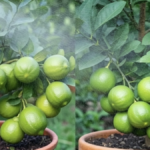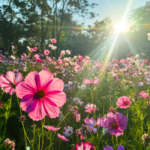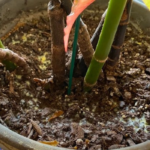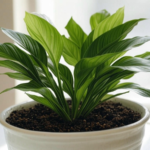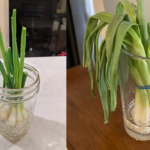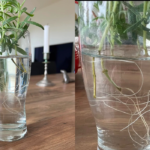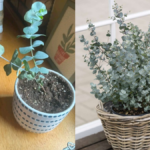Endless Summer Hydrangea Care is easy and enjoyable, even for beginner gardeners. With proper watering, sunlight, soil, and pruning, this beautiful plant can bloom repeatedly throughout the summer. In this guide, I’ll share everything you need to grow healthy and colorful Endless Summer Hydrangeas in your home garden.
As someone who has been gardening for years, I can say that Endless Summer Hydrangea is one of my all-time favorite flowering plants. I planted mine five years ago, and every summer, it rewards me with big, colorful flowers that brighten my yard. Whether you are growing it in a pot or in the ground, caring for it the right way is important.
What is Endless Summer Hydrangea?
Endless Summer Hydrangea is a unique type of hydrangea that blooms on both old and new wood, which means it flowers more often than regular hydrangeas. You’ll see blooms from late spring to early fall. It is a deciduous shrub known for its large, mophead flowers that can turn blue, pink, or purple depending on the soil’s pH.
Popular varieties include:
- Endless Summer Original
- BloomStruck
- Twist-n-Shout
- Summer Crush
Each type has slightly different flower colors and growth habits, but care for all of them is almost the same.
Quick Tips for Endless Summer Hydrangea care
Here’s a quick overview of what your plant needs to grow well:
- Water: Keep the soil moist but not soggy
- Sunlight: Morning sun + afternoon shade
- Soil: Rich, well-draining soil with organic matter
- Fertilizer: Apply balanced fertilizer in spring and mid-summer
- Pruning: Light pruning after blooming
- Protection: Mulch around base for moisture and root safety
How to Water Endless Summer Hydrangea
Watering is the most important part of hydrangea care. These plants love moist soil but hate standing water.
- Water deeply 2–3 times a week, especially in hot summer
- Avoid shallow watering — it leads to weak roots
- Water early morning or late evening to prevent evaporation
- Use mulch to help the soil stay moist
Signs your hydrangea needs more water:
- Leaves start drooping
- Flower buds shrink or dry
- Soil feels dry 2 inches below surface
Best Soil for Endless Summer Hydrangea
Hydrangeas need rich, well-drained, slightly acidic soil. You can improve your garden soil by mixing compost or aged cow manure.
- For blue flowers: Soil should be acidic (pH below 6)
- For pink flowers: Soil should be alkaline (pH above 7)
To change flower color:
- Add aluminum sulfate for blue
- Add garden lime for pink
Tip: Use a soil pH test kit before making changes.
Sunlight and Temperature Needs
Endless Summer Hydrangea loves morning sun and afternoon shade. Too much direct sunlight, especially in hot areas, can burn the leaves and fade the flowers.
- Best location: East-facing side of your home or under light tree cover
- Ideal temperature: 65°F to 80°F (18°C to 27°C)
- Can survive winter in cold zones (USDA zone 4–9)
In colder zones, cover the base with mulch or dry leaves during winter for root protection.
Humidity and Air Flow
These hydrangeas grow well in normal to high humidity. If you live in a dry area:
- Water more often
- Group plants together to increase humidity
- Avoid overcrowding — air flow prevents diseases
How to Fertilize Endless Summer Hydrangea
Feed your plant twice a year for healthy growth and more flowers:
- First feeding in early spring when new growth starts
- Second feeding in mid-summer after first bloom
Use a balanced fertilizer (like 10-10-10 or 12-4-8). Avoid high nitrogen fertilizers — they make more leaves and fewer flowers.
How to Prune Endless Summer Hydrangea
The secret to more blooms is light and timely pruning.
- Prune only after the plant finishes blooming
- Remove dead, damaged, or weak stems at the base
- Do not cut in early spring — buds may already be forming
Over-pruning can reduce flowering, as the plant blooms on both old and new wood.
Common Problems and Simple Solutions
| Problem | Cause | Solution |
|---|---|---|
| No Blooms | Over-pruning or too much nitrogen | Light pruning, balanced fertilizer |
| Yellow Leaves | Poor drainage or overwatering | Improve soil drainage, reduce watering |
| Drooping Leaves | Underwatering or heat | Deep watering, add mulch |
| Brown Spots on Leaves | Fungal issues | Use organic fungicide, water at base |
Growing Endless Summer Hydrangea in Pots
Yes, you can grow it in a container! Choose a large pot with drainage holes, and use a well-draining, rich potting mix. Keep the plant in a spot where it gets 4–6 hours of sunlight and stays protected in the afternoon.
Water more frequently, as pots dry out faster. Also, repot every 2–3 years or when roots become crowded.
FAQs About Endless Summer Hydrangea Care
How often should I water Endless Summer Hydrangea?
You should water it 2–3 times a week, especially in hot or dry weather. Make sure the soil stays moist but not soggy. Always water deeply at the base of the plant.
Why are my Endless Summer Hydrangea not blooming?
The most common reasons are over-pruning, too much nitrogen fertilizer, or lack of sunlight. Lightly prune after flowering and use a balanced fertilizer. Make sure the plant gets morning sun.
Can Endless Summer Hydrangea grow in pots?
Yes, you can grow them in containers. Use a large pot with good drainage and rich, well-draining soil. Place the pot where it gets morning sun and afternoon shade.
Conclusion
Caring for Endless Summer Hydrangea is not difficult if you follow the basics — good watering, the right soil, partial sunlight, and light pruning. With a little love and care, your plant will bloom again and again, bringing beauty to your garden all summer long.
Read more Post
How to Take Care of a Jade Plant in Summer : The Ultimate Guide
Late Summer Lawn Care Tips to Keep Your Grass Green and Healthy (My Easy Method)

